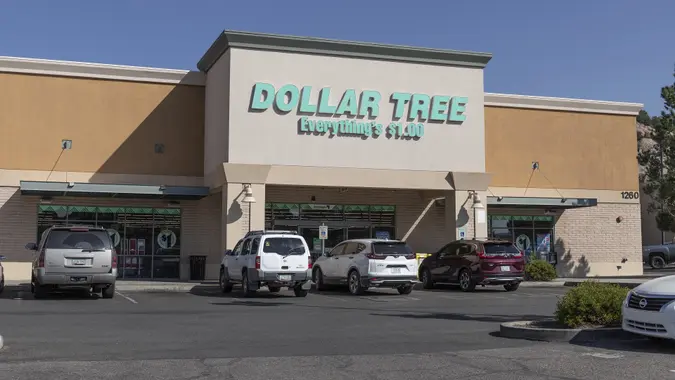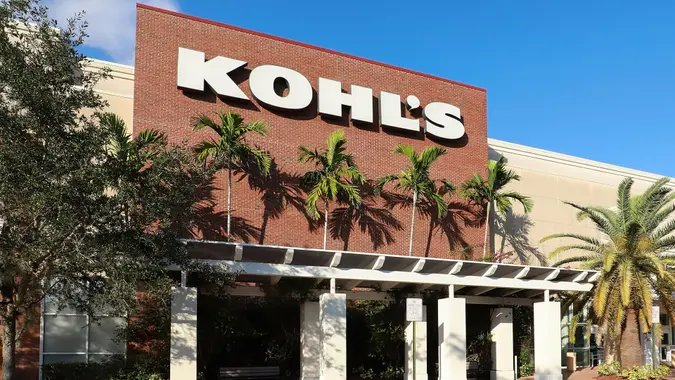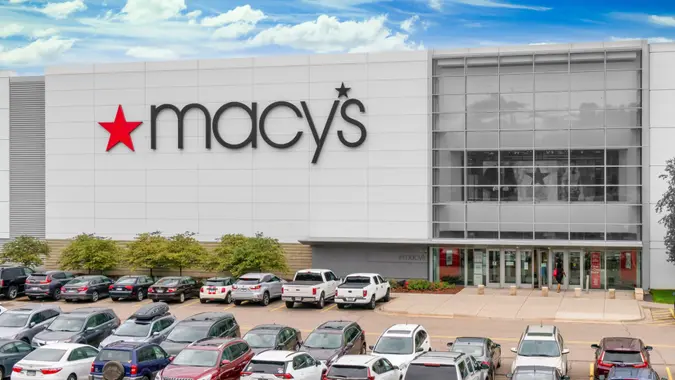Here’s How Much You Could Save if You Buy Bulk vs. Convenience Over 10 Years

Commitment to Our Readers
GOBankingRates' editorial team is committed to bringing you unbiased reviews and information. We use data-driven methodologies to evaluate financial products and services - our reviews and ratings are not influenced by advertisers. You can read more about our editorial guidelines and our products and services review methodology.

20 Years
Helping You Live Richer

Reviewed
by Experts

Trusted by
Millions of Readers
With inflation and tariffs driving up the prices of food items and household staples, many Americans are turning to bulk shopping at wholesale clubs and warehouses to cut spending. Consumers save 27% on average across the board when buying in bulk compared to convenience shopping, according to a study by Lending Tree.
However, it’s important to note that several factors determine savings, such as the types of products you buy and food waste. GoBankingRates analyzed the study to illustrate some of the products with the highest savings and how to determine whether bulk buying is the right choice for your household. Here’s how much you could save through bulk buying vs. convenience buying over 10 years.
Key Insights
- Consumers save an average of 27% across food staples, according to the study.
- However, savings of up to 82% are possible when buying specific products in bulk.
- Participants estimated average weekly savings of $25 to $50.
- The annual savings they projected ranged between $300 and $600.
- Over 10 years, that could equate to saving $3,000 to $6,000 by buying in bulk rather than convenience buying.
Factors That Impact Savings When Bulk Buying vs. Convenience Shopping
These are essential factors to consider when determining how much money you’ll actually save over a term of 10 years or even a year, whether you buy your grocery staples in bulk or at a retail store.
Products With a Long Shelf Life
Products with a long shelf life (paper towels, diapers, toilet paper, pasta, beans and batteries) last longer, which means more savings since they don’t risk waste and permit larger purchases at cheaper cost per unit.
For example, buying Bounty Paper Towels in bulk at Costco costs $32.99 for 1,236 sheets, a price of $0.03 per sheet. In contrast, Bounty Paper Towels at Walmart cost $14.96 for 196 sheets ($0.08 per sheet). This means you’ll save 0.65% per sheet when buying in bulk at Costco.
Another product with a long shelf life and impressive bulk savings is a pack of Duracell AA batteries. At Walmart, an eight-count package of Duracell AA batteries costs $9.99, while a 40-count package at Costco costs $19.99, giving you five times as many batteries for $10 more, saving you 60%.
Don’t Let Your Savings Perish From Food Waste
Perishable food items like dairy, seafood, meat and fresh produce have a short shelf life, even when frozen, contributing to food waste, which drains savings. Many of these items end up in the trash when they’ve passed their expiration date or spoiled. As a result, many bulk shoppers throw them away, especially when they end up forgotten in the back of the fridge, so it may be better to buy them in smaller quantities at a standard grocery store rather than in bulk at a wholesale club.
Whether you buy perishables in bulk or at a regular store, a good strategy to avoid food waste is to put items that expire quickly at the front of the refrigerator in a clear bin, so you eat them before they spoil.
Membership Costs: Are They Worth It?
Wholesale clubs like Costco, Sam’s Club and BJ’s offer bulk buying at lower unit prices for the cost of an annual membership fee. Members also benefit from perks, such as cheaper gas, travel discounts, insurance and access to other services. Another thing to keep in mind is how often you shop and how much you actually save on the specific items you buy.
Membership fees typically range from $50 to $65 for basic memberships and up to $130 for premium plans. However, sometimes warehouse clubs offer promotions for new members, such as Sam’s Club’s $15 first-year deal in October 2025, according to NBC News.
The bottom line: if you have room for storage, and buy staples that don’t expire quickly, bulk buying is a smart strategy that can help you maximize your grocery dollars for the next 10 years and take advantage of membership perks, too.
 Written by
Written by  Edited by
Edited by 

























